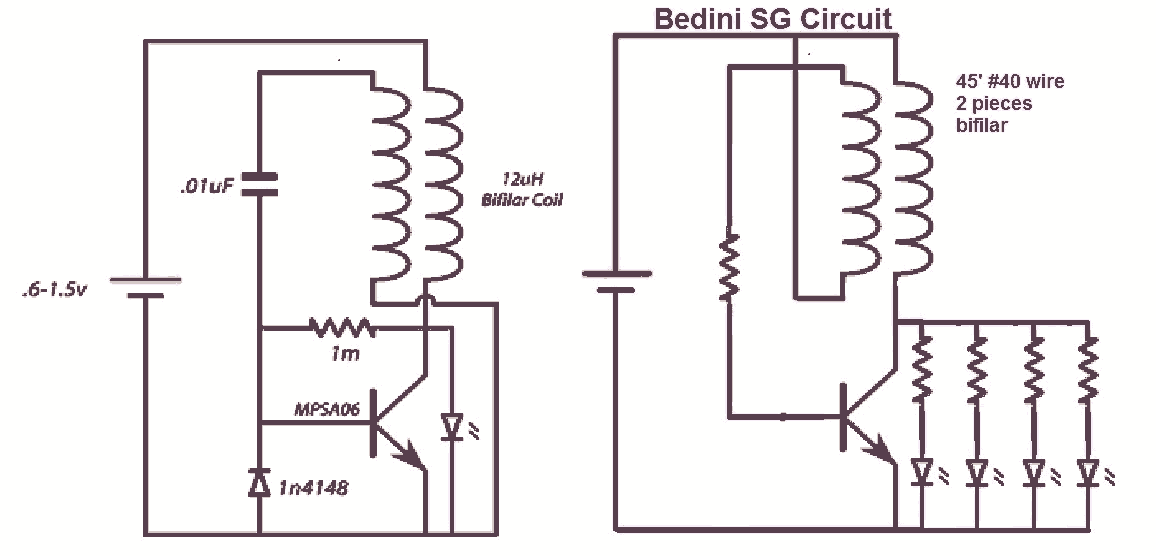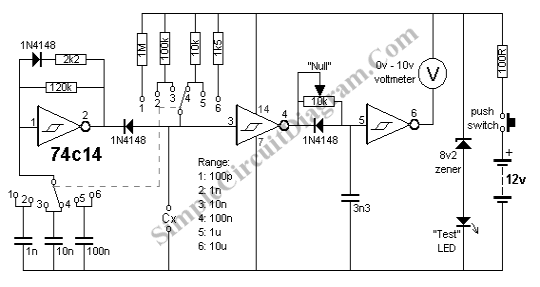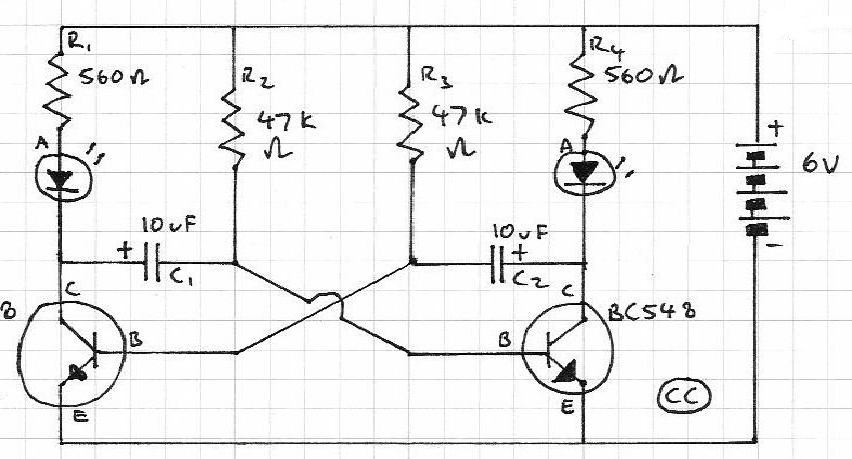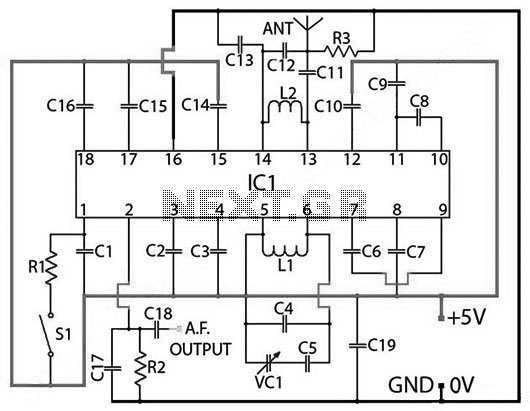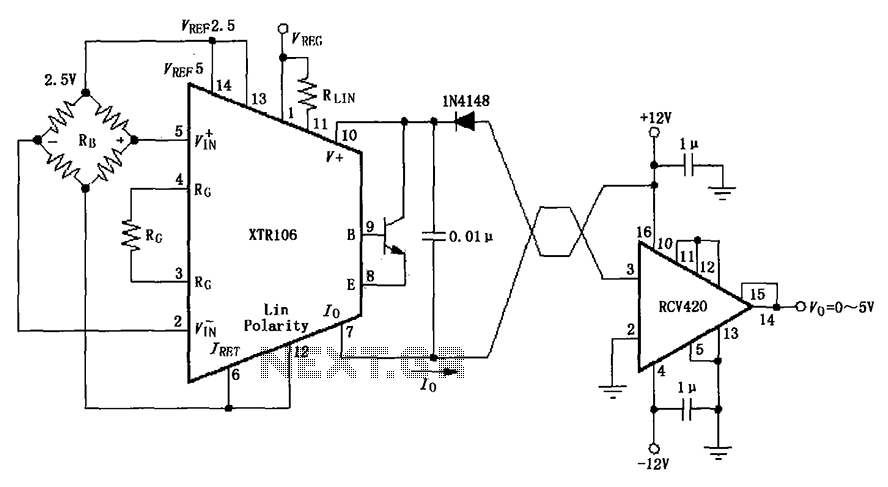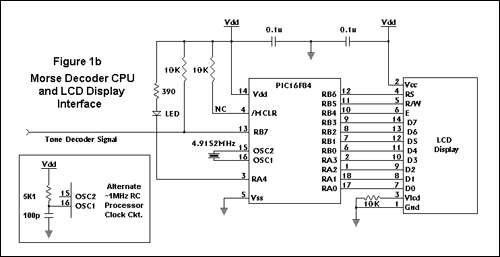
Tone control circuit
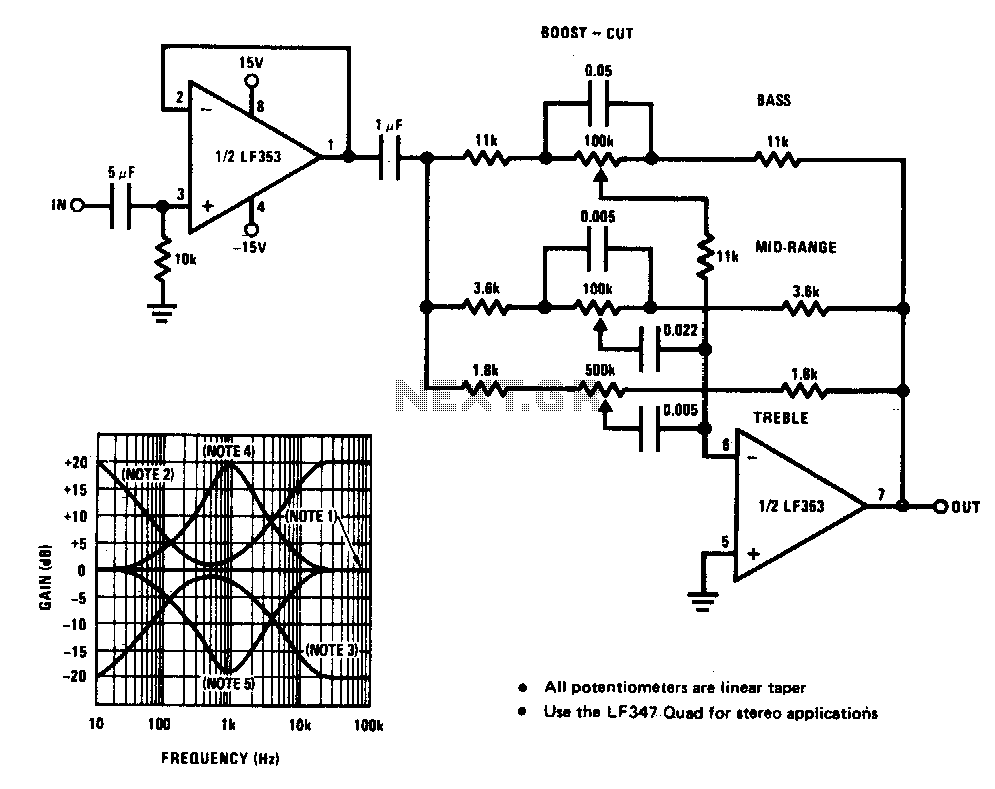
A simple single-transistor circuit provides an approximate 15 dB boost at 100 Hz and a 15 dB cut at 15 kHz. A low-noise audio transistor is utilized, and the output can be directly connected to any existing amplifier volume control where the tone control is to be integrated. The gain of the circuit is nearly unity when the controls are set to the flat position.
This single-transistor circuit functions as an audio tone control system, designed to enhance or attenuate specific frequency ranges within the audio spectrum. The circuit employs a low-noise audio transistor, which is essential for maintaining audio fidelity and minimizing unwanted noise and distortion during operation.
At the core of this design is the transistor's ability to manipulate gain based on the frequency, achieving a 15 dB boost at 100 Hz, which is typically associated with bass frequencies, allowing for a richer low-end sound. Conversely, the circuit provides a 15 dB cut at 15 kHz, targeting higher frequencies to prevent harshness or excessive brightness in the audio output.
The output stage of the circuit is engineered to interface seamlessly with existing amplifier systems. This allows for direct connection to the amplifier's volume control, making it an ideal addition to any audio setup requiring tone adjustment. The circuit's gain is designed to be nearly unity when the tone controls are set to a flat position, ensuring that the audio signal remains consistent and unaltered when no tone adjustment is desired.
The simplicity of this circuit makes it easy to implement in various audio applications, providing users with a straightforward means to customize their listening experience while maintaining high-quality sound. Proper component selection and layout are crucial to achieving the desired performance, including careful consideration of the transistor's specifications, power supply decoupling, and input/output coupling capacitors to ensure optimal operation across the intended frequency range.A simple single-transistor circuit will give approximately 15 dB boost or cut at 100 Hz and 15 kHz respectively. A low noise audio type transistor is used, and the output can be fed directly into any existing amplifier volume control to which the tone control is to be fitted
The gain of the circuit is near unity when controls are set in the flat position.
This single-transistor circuit functions as an audio tone control system, designed to enhance or attenuate specific frequency ranges within the audio spectrum. The circuit employs a low-noise audio transistor, which is essential for maintaining audio fidelity and minimizing unwanted noise and distortion during operation.
At the core of this design is the transistor's ability to manipulate gain based on the frequency, achieving a 15 dB boost at 100 Hz, which is typically associated with bass frequencies, allowing for a richer low-end sound. Conversely, the circuit provides a 15 dB cut at 15 kHz, targeting higher frequencies to prevent harshness or excessive brightness in the audio output.
The output stage of the circuit is engineered to interface seamlessly with existing amplifier systems. This allows for direct connection to the amplifier's volume control, making it an ideal addition to any audio setup requiring tone adjustment. The circuit's gain is designed to be nearly unity when the tone controls are set to a flat position, ensuring that the audio signal remains consistent and unaltered when no tone adjustment is desired.
The simplicity of this circuit makes it easy to implement in various audio applications, providing users with a straightforward means to customize their listening experience while maintaining high-quality sound. Proper component selection and layout are crucial to achieving the desired performance, including careful consideration of the transistor's specifications, power supply decoupling, and input/output coupling capacitors to ensure optimal operation across the intended frequency range.A simple single-transistor circuit will give approximately 15 dB boost or cut at 100 Hz and 15 kHz respectively. A low noise audio type transistor is used, and the output can be fed directly into any existing amplifier volume control to which the tone control is to be fitted
The gain of the circuit is near unity when controls are set in the flat position.
